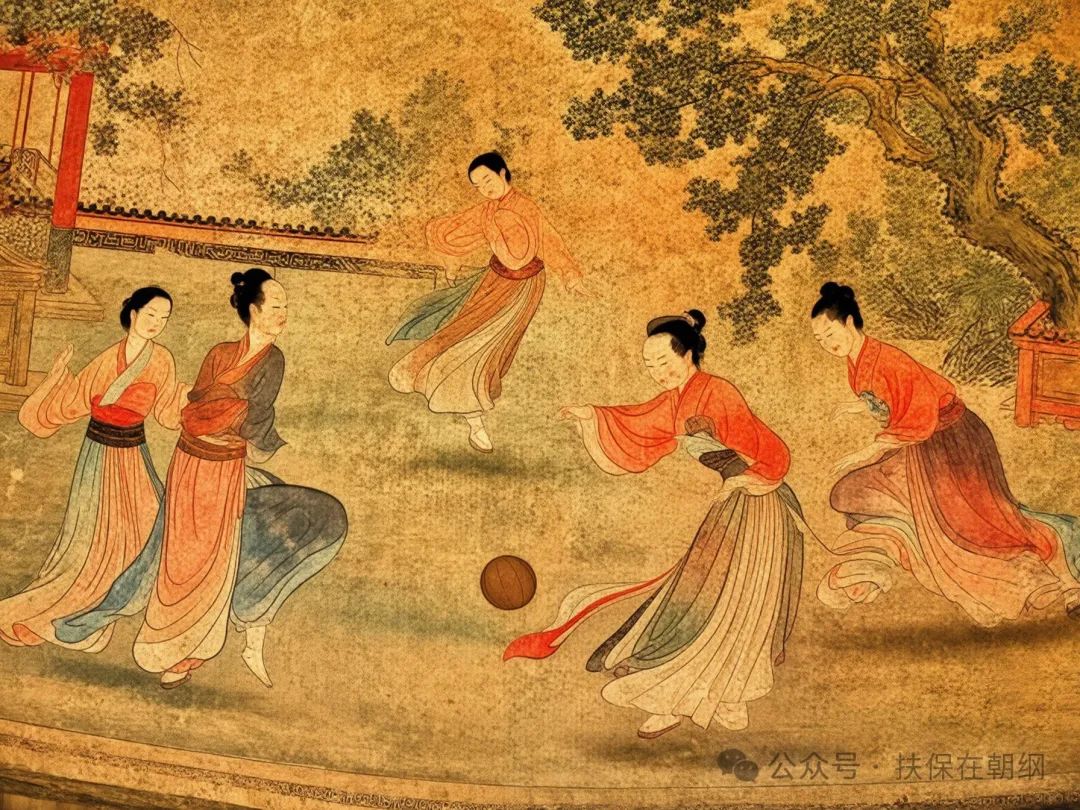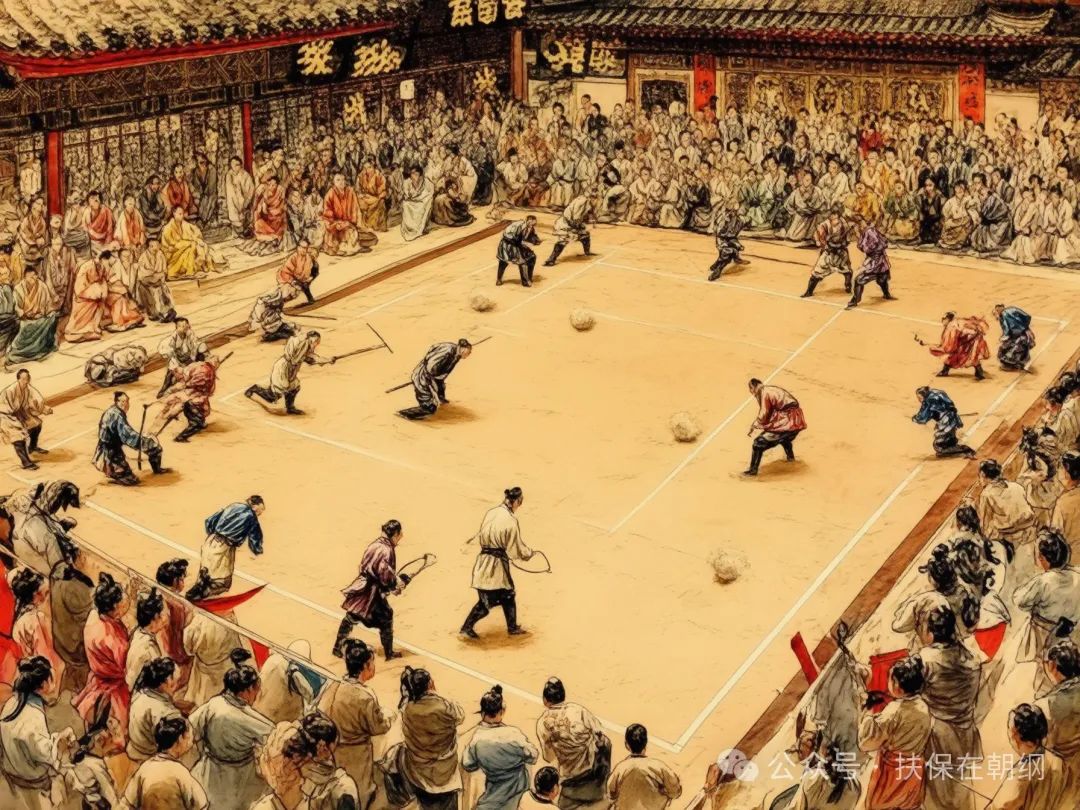
Click
On the text above
Follow us~

Understanding Cuju: The Ancient Chinese Football Game and Its Differences from Modern Football
Introduction
Cuju, as an ancient Chinese sporting activity, is regarded as one of the origins of football worldwide.Many people misunderstand the pronunciation of the term “蹴鞠” (Cuju), leading to awkwardness in communication.Today, let us explore the correct pronunciation of this ancient sport and its similarities and differences with modern football.
1. Pronunciation Exploration
The correct pronunciation of “蹴鞠” is “cù jú” (falling tone – rising tone), rather than the common mispronunciation “cù jū”.
Among these two characters, the pronunciation of “蹴” is relatively simple, while “鞠” is often mispronounced.Common homophones include:
- 醋 (cù): condiment
- 促 (cù): promote
- 橘 (jú): fruit
- 局 (jú): scope, situation
Special reminder: In ancient texts, the character “鞠” is sometimes pronounced as “jū”, but in the term “蹴鞠”, it is fixed as “jú”.
2. Evolution of Characters and Original Meaning
The character “蹴” is a phonetic-ideographic character, deriving its meaning from “足” (foot) and its sound from “就”. The “足” component indicates a relation to the foot, while “就” signifies sound and implies a forward, rapid movement. The character “鞠” is also a phonetic-ideographic character, deriving its meaning from “革” (leather) and its sound from “匊”, originally referring to a ball made of leather.

3. Historical Research and Origins
The explanation of “蹴” in the “Shuowen Jiezi” is: “蹴, to tread.” meaning to kick with the foot. The “Shiming·Shiyongqi” records: “鞠, to strike, the leather that is struck.” referring to a leather ball kicked with the foot.
The term “蹴鞠” first appeared in the “Book of Han”, indicating that it was already a popular activity during the Han Dynasty. It reached its peak during the Tang and Song Dynasties, where court nobles and literati took pride in their ability to play.
4. Cuju Rules Compared to Modern Football
1. Ball Construction
The ancient Cuju ball was made of eight triangular leather pieces sewn together, filled with animal hair, resembling modern football but slightly smaller in size. The construction of the ball required high standards to ensure it was round and had moderate elasticity.
2. Field and Number of Players
The Cuju playing field was often square, with goals set at the four corners, and the number of participants ranged from 2 to 16. Unlike the modern football regulation of 11 players, Cuju was more flexible, adjusting the number of players based on the field and purpose.
3. Competitive Methods
Cuju had various gameplay styles, commonly including “斗鞠” (similar to modern football) and “戏鞠” (showcasing individual skills). Ancient Cuju emphasized skill and aesthetics, requiring participants to demonstrate various kicking, juggling, receiving, and passing techniques.

4. Determining Victory and Defeat
The determination of victory and defeat in Cuju differs fundamentally from modern football, as it considers not only the number of goals scored but also the aesthetic quality of the techniques and team cooperation.
In some forms of competition, the duration for which the ball remains airborne is also an important evaluation criterion, which is distinctly different from modern football’s emphasis on “winning by scoring goals”.
5. The Influence and Legacy of Cuju
Cuju is not only a sporting activity but also an important part of ancient Chinese culture, having a profound impact on poetry, painting, and other art forms. After the Ming and Qing Dynasties, Cuju activities gradually declined. However, as one of the origins of world football, 🌟 the historical value of Cuju has been officially recognized by FIFA.
In 2004, FIFA President Blatter officially acknowledged Chinese Cuju as one of the earliest forms of football in the world.
Conclusion
Although “蹴鞠” consists of only two characters, it carries rich cultural connotations and sporting spirit. By understanding its correct pronunciation and historical development, we can not only avoid awkwardness in communication but also appreciate the profound depth of Chinese culture. We hope this article helps everyone correctly recognize this ancient sport and remember our cultural roots while understanding modern football.

Like

Share

View

Comment